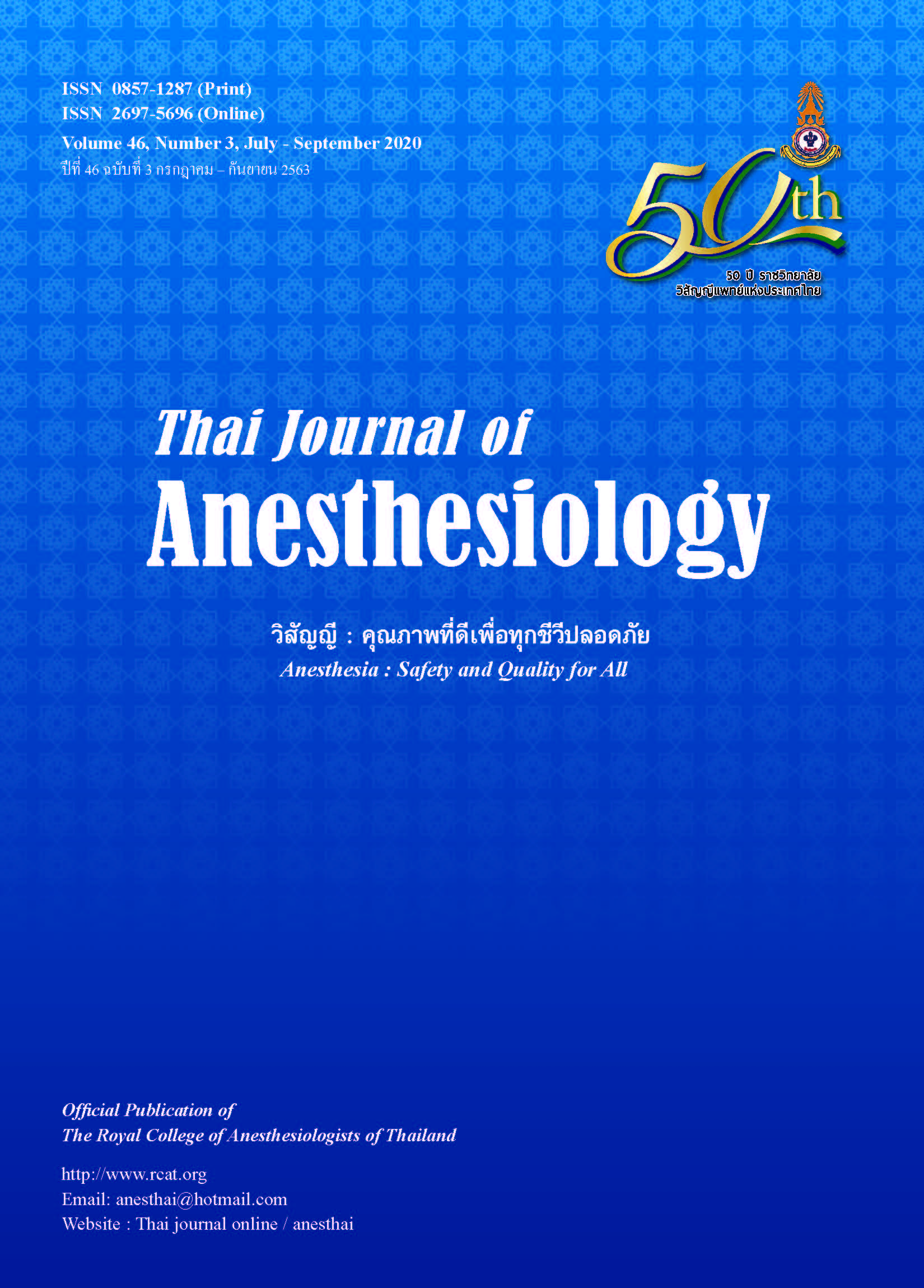Disinfection of Laryngoscope Blade after Intubation according to the Infection Control Guidelines of Siriraj Hospital
Main Article Content
Abstract
Laryngoscope is the essential medical equipment in
general anesthesia, therefore laryngoscope cleaning and
sterilization process is necessary. Previous studies had
shown bacteria contamination after routine cleaning and
sterilization of laryngoscope blade which may be important
sources of patient-patient disease transmission. Cleaning
and Sterilization of reusable blade in Thailand are
necessary because limitation of central supply and high
daily consumption. Infection control guideline had been
developed effective reprocessing and reuse system to
provide adequate laryngoscope blade for routine use and
decrease risk of contamination and infection in patient
and healthcare provider. Effectiveness of cleaning and
sterilization process after usage of laryngoscope blade
can prevent nosocomial infection, infection of healthcare
provider with good efficacy and efficiency.
Article Details
References
decontamination techniques: A survey. J Anaesthesiol Clin
Pharmacol 2016;32:99-102.
2. Committee on Association of Anaesthetists of Great Britain
and Ireland. Guidelines infection control in anaesthesia.
Anaesthesia 2008;63(9):1027-36.
3. Bucx MJ, Veldman DJ, Beenhakker MM, Koster R. The effect
of steam sterilisation at 134 degrees C on light intensity
provided by fibrelight Macintosh laryngoscopes. Anaesthesia
1999;54:875-8.
4. Telang R, Patil V, Ranganathan P, Kelkar R. Decontamination
of laryngoscope blades: is our practice adequate? J Postgrad
Med 2010;56:257-61.
5. Lowman W, Venter L, Scribante J. Bacterial contamination
of re-usable laryngoscope blades during the course of
daily anaesthetic practice. S Afr Med J 2013;103:386-9.
6. Karnik PP, Dave NM, Nataraj G, Gupta R, Garasia M.
Comparison of efficacy and cost-effectiveness of 0.55%
ortho-phthalaldehyde and 2% glutaraldehyde for disinfection
of laryngoscopes: A prospective pilot study. Indian J Anaesth
2017;61:490-3.
7. Bucx MJ, Dankert J, Beenhakker MM, Harrison TE.
Decontamination of laryngoscopes in The Netherlands. Br J
Anaesth 2001;86:99-102.
8. Cormack RS, Lehane JR, Adams AP, Carli F. Laryngoscopy
grades and percentage glottic opening. Anaesthesia
2000;55:184.
9. Rutala WA, Weber DJ. New developments in reprocessing
semicritical items. Am J Infect Control 2013;41(5 Suppl):
S60-6.
10. Chaskar VP, Dave NM, Dias R, Karnik P. Disinfection of
laryngoscopes: A survey of practice. Indian J Anaesth
2017;61(3):245-9.
11. Todar K. Todar’s online textbook of Bacteriology [internet].
Madison, Wisconsin. Retrieved from http://textbookofbacteriology.
net/normalflora.html. Access on 21 Jan 2020.
12. The Healthcare Infection Control Practices Advisory
Committee (HICPAC). Guideline for Disinfection and
Sterilization in Healthcare Facilities. 2008. Retrieved from
http://www.cdc.gov/infectioncontrol/guidelines/disinfection/.
Access on 21 Jan 2020.
13. Zinboonyahgoon N, Chinachoti T, Trakulsomboon S,
Plicharoenpon P. Contamination of laryngoscopes in Siriraj
Hospital’s operating theaters. Thai J Anesthesiol 2008;34:
85-91.


